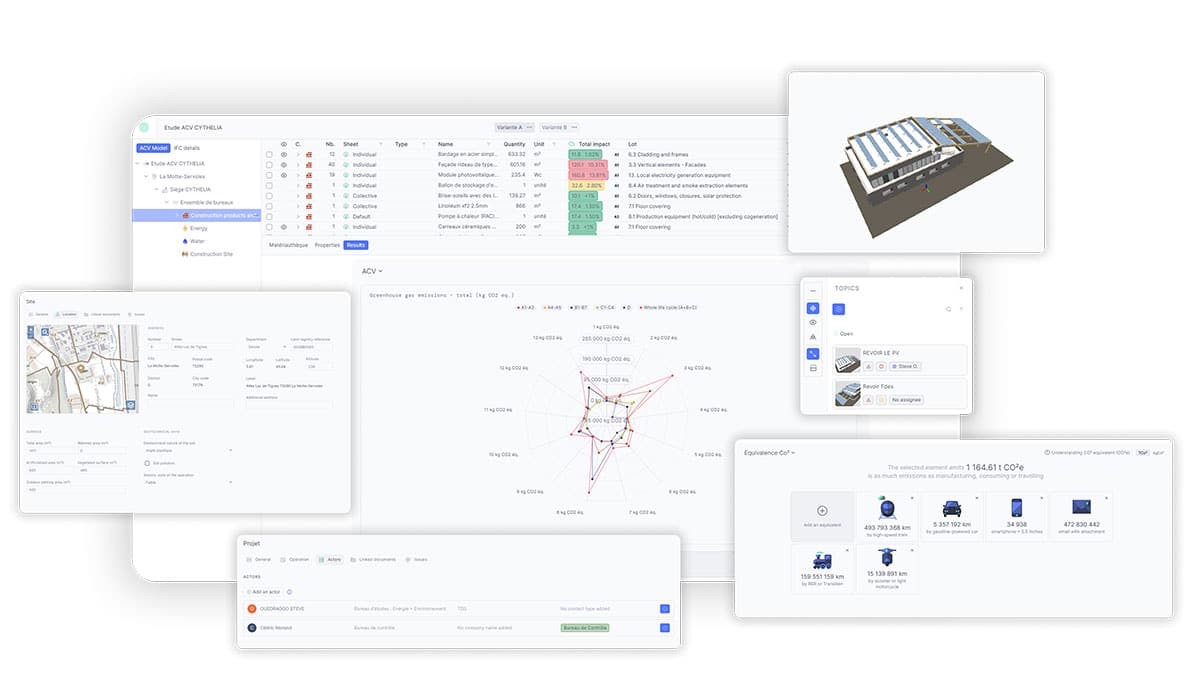A BIM approach
Carbonz: A Platform Natively Designed to Integrate Carbon Calculation into the BIM Process
Specifically developed to operate within a BIM approach and leverage 3D models, Carbonz stands out as a unique tool in the field of Life Cycle Assessment (LCA). It combines ergonomics, productivity, and pedagogy while integrating BIM dimensions to enhance and optimize analyses.

Why is working with a 3D model more advantageous?
Beyond the fact that BIM usage is becoming increasingly widespread and is mandatory in many regions worldwide, working with a 3D model offers numerous benefits:
- BIM integration facilitates access to geometric and technical information required for thermal, energy, and environmental simulations. Users can extract key elements, such as materials, energy systems, and spatial characteristics, without manual input, ensuring greater accuracy.
- Carbonz incorporates BIM model data while maintaining the integrity and consistency of units and calculated quantities derived from the model’s geometry.
- LCA calculations require extensive data handling, and the risk of errors is significant. The study’s results have a major impact on indicator calculations and compliance with mandatory regulatory thresholds. Using a 3D model allows:
- Easy 3D navigation, which is far more convenient compared to working with long lists of measurements.
- Extraction and better understanding of spaces, zones, and quantities derived from the geometric model.
- Reduced risk of quantity errors.
- Better data management as the project evolves.
- Navigation and data filtering enable users to visualize the impact of a specific equipment or product within the space.
- Within a BIM process, all objects and elements defined by the LCA calculation enrich the digital model, providing additional information to all stakeholders.
- In the later project stages, any modifications to products or equipment instantly update the LCA impact.
- LCA results can be directly visualized in the 3D model, facilitating the identification of environmental hotspots.
- Users can filter and calculate impacts on specific subsets or zones within the project and compare them to other areas.
- BIM enables easy comparison of different design options. The impacts of each variant can be calculated, compared, and visualized more intuitively.
Thus, using BIM simplifies the understanding of complex regulations and numerous indicators, whose implications may not always be immediately clear. With Carbonz, the digital model can be used as a support tool to better understand the impact of construction choices or as part of a fully integrated BIM process at Level 2 or 3.